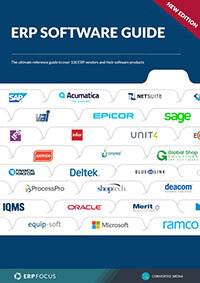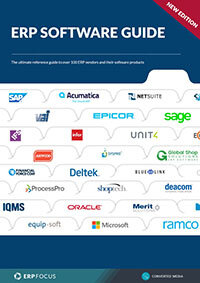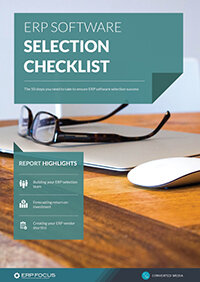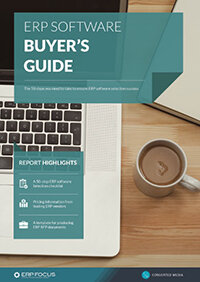5 Ways Big Data is Changing ERP Software
According to today’s tech media, Big Data systems are on the way to creating some of the most celebrated operational impacts since Oracle’s SQL V.1. Much is being made about real-time information ‘anywhere, everywhere, all the time’, while other assertions claim that Big Data systems are so ‘smart’ that these technologies ‘think ahead’ of customers and managers, as if they represent some kind of software-based life form.
Nevertheless, while this kind of media visibility does impart kernels of truth here and there, when one gets in the weeds these opines rarely articulate what is really going on from a practical perspective, and more importantly, what changes to our ERP systems are going to arise. In turn, this ‘all hat no cattle’ media approach tends to create a host of practical problems for enterprise managers who are simply trying to keep up in the midst of all of the ERP Big Data whitenoise.
Consequently, this dearth of administrative interest is particularly vexing to those who are responsible for daily ERP operations, since to be fair, these systems were clearly seen to be representative of what ‘big data’ passed for back in the day. However, venerable platforms like Oracle ERP, SAP and others are not taking today’s ERP Big Data emergence lying down, by moving quickly toward direct integrations with newly hatched flex-scale network systems like Apache Hadoop, in addition to proprietary wrinkles like SAP’s HANA in-memory layer and Oracle’s Big Data Appliance.
Nevertheless, while managers can now learn more about the bowels of emergent Big Data systems on top of the drumbeat of press hyperbole, there’s still a knowledge gap present, since from a pure management perspective little is being said about the specifics of the impacts on ERP modules. So, we thought we’d offer a leg up by suggesting some of the more important touchstones in the chase for Big Data ERP technologies.
Faster Information Delivery – All ERP Modules
In this case, Big Data systems like Apache’s Hadoop are creating node-level operating transparencies that touch nearly every current ERP module in real-time. This advantage will allow enterprise managers to quickly leverage ERP Big Data capabilities, thereby enhancing information density and speeding up overall decision-making.
Improved Scheduling – Project Management
Since this module is essentially driven by a series of schedule-based metrics, when it comes to the integration of Big Data systems, information will be more immediate and readily available, due to today’s intrinsic constellation of delivery devices. Need more data from multiple mobile-enterprise field service units? It’ll be available in real-time. Need more data from the same enterprise’s remote manufacturing outlets, in parallel with main plant, or even individual machine-station scheduling? All of those data points will be available simultaneously and in real-time. This advancement will ultimately lead to comprehensive ERP scheduling that, in turn, will create better overall project management efficiencies.
More Accurate Forecasting – Business Intelligence
For an ERP manager, one of the most daunting challenges is a sense that he doesn’t ‘know what he doesn’t know.’ This particular sensitivity is rife within any established Business Intelligence unit. However, today’s ERP Big Data integrations immediately offer a host of easily leveraged opportunities to resolve the need for ‘more data all the time,’ ultimately leading to overall forecast accuracy.
Increased Quality Assurance – Manufacturing
The discipline associated with acquiring raw materials then altering or integrating those components to create finished products is truly where the quality assurance unit’s rubber hits the road. In the case of integrating ERP Big Data with quality assurance processes, then, the new technology allows manufacturers to channelize, store and monitor every real-time data point along a production line, in order to create better results at the work-in-progress phase rather than having to deal with problems only after a product hits the quality assurance floor.
Expanded Customer Profiling – CRM
When it comes to commercial real estate the old axiom suggests that ‘location, location, location,’ is paramount; but it’s about to be expanded with ‘customer location, customer location, customer location,’ since in the case of ERP Big Data integrated with CRM modules, enormous opportunities arise. Suddenly CRM operators have the ability to track and trap customer trend patterns in real-time, then immediately apply that focused data to create further direct sales offers.
Each of these focus areas offer an idea of just how Big Data is altering and evolving management thinking in the case of ERP, while at the same time offering a host of new solutions to old school problems. There’s still a lot to learn about ERP Big Data yet, but even at that, the ride is likely to be worth the price of the ticket in the end.
Free white paper

ERP Software Guide
A 70 page guide covering over 100 different software products

Featured white papers
-

60-Step ERP Selection Checklist
Get the comprehensive checklist for your ERP selection project
Download -

ERP software buyer's guide
Save hours of ERP selection research with this comprehensive buyer's guide
Download -

70 features to look for in your next ERP
A comprehensive guide to help you identify requirements for your ERP selection
Download
Related articles
-

ERP capacity planning and scheduling
The different types of capacity planning and how this impacts scheduling
-

CMMC Compliance: What Aerospace and Defense Manufacturers Need to Know
Key insights on CMMC compliance, deadlines, and securing DoD contracts with CMMC 2.0 certificatio...
-

Top benefits of ERP inventory management
How an ERP helps inventory management including four key advatages

